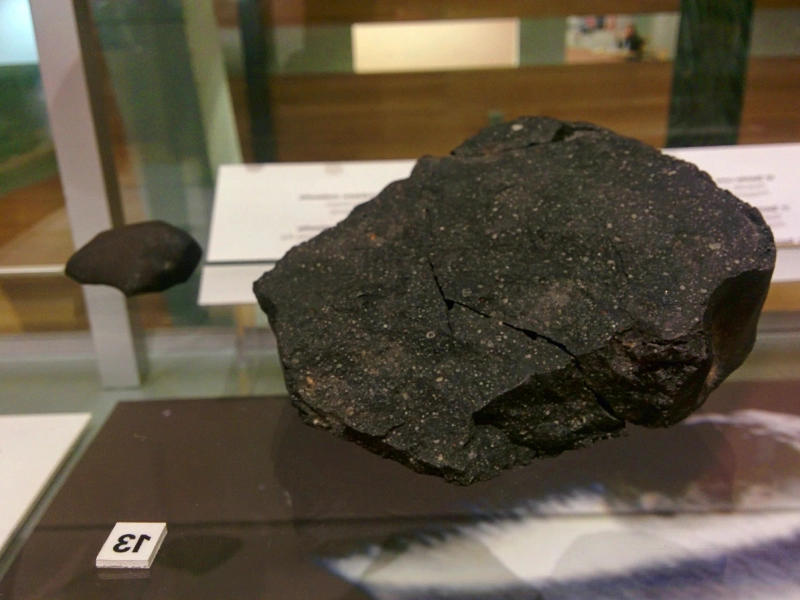Space Rocks That Rocked Our World: 10 Meteors You Won't Believe Actually Hit Earth!
Advertisement
6. The Murchison Meteorite

Advertisement
Organic substances including amino acids from Australia's Murchison meteorite presented a cosmic gift to Earth. This meteorite has greatly advanced knowledge of the possible function of alien elements in the beginning of life on Earth. Discovery of the Murchison meteorite and later investigations have given important new perspectives on the chemistry of the early solar system and possible links between meteorites and the beginnings of life.
On September 28, 1969, close to Victoria, Australia's Murchison town, the Murchison meteorite dropped to Earth. Witnesses saw a brilliant blaze then a sequence of deafening booms. During its fall, the meteorite split apart and sent thousands of bits over a large area. While smaller bits were gathered from the surroundings, the biggest pieces weighed several kilogrammes. Scientists and aficionados for meteorites noticed the event and soon saw its importance.
Comprising a varied array of minerals and organic components, the Murchison meteorite is classified as a CM2 carbonaceous chondrite. Its matrix comprises presolar grains—tiny particles that predate the origin of our solar system, chondrules, calcium-aluminum-rich inclusions (CAIs), These elements offer a special window of view of the early solar nebula, the cloud of gas and dust from which our solar system developed. Through research on the Murchison meteorite, scientists have acquired important new understanding of the circumstances and mechanisms forming the early solar system.
Rich organic content of the Murchison meteorite is among its most fascinating features. Organic chemicals abound in the meteorite, including amino acids—the building blocks of life. The Murchison meteorite has revealed over seventy distinct amino acids, many of which are not found on Earth naturally. These organic molecules have generated a lot of attention on the possible function of meteorites in the beginning of life on Earth. Some scientists speculate that meteorites such as Murchison would have brought necessary organic molecules to the early Earth, therefore supplying the building blocks for life. Thus, the study of the Murchison meteorite has helped us to grasp the possible links between space rocks and the beginning of life.
The organic compounds in the Murchison meteorite are not only varied but also rather remarkably well-preserved. The fast fall and retrieval of the meteorite helped shield its fragile organic molecules from damage and pollution. This preservation has made it possible for researchers to examine the organic content of the meteorite in great detail, therefore offering important information on the chemistry of the early solar system. By means of the analysis of the organic molecules of the Murchison meteorite, one can also gain understanding of the possible routes for the production of sophisticated organic molecules in space, therefore clarifying the chemical mechanisms perhaps involved in the beginnings of life.
Apart from its natural composition, the Murchison meteorite boasts a richness of mineralogical and isotopic data. The matrix of the meteorite consists in a range of minerals, including phyllosilicates, olivine, and pyroxene, which offer hints regarding the environment and mechanisms forming the early solar system. Presolar grains, microscopic particles existing before the creation of our solar system, provide a window into the past of stellar nucleosynthesis and the contributions made by past stars to the solar nebula. By means of isotopic studies of the Murchison meteorite, we have also obtained important information on the timing and mechanisms of solar system development, therefore improving our knowledge of the chronology of planetary creation.
Because of its unusual composition and historical significance, the Murchison meteorite has grown to be a sought-after collection item for museums. Museums and research facilities all around show fragments of the meteorite, which still excite and inform the public about the beauties of space and possible links between meteorites and the beginning of life. The discovery of the meteorite and later research have also underlined the significance of these objects for comprehending the evolution and background of our planet and the solar system.
Finally, the Murchison meteorite represents a unique window into the early solar system and the possible function of alien material in the beginning of life on Earth. Its rich organic composition, varied mineralogy, and well-preserved condition make it a useful scientific tool and an intriguing topic of research. The Murchison meteorite reminds us of the intricate and linked events that have sculpted our solar system and the possible links between space rocks and the beginning of life as we still investigate the secrets of the cosmos.
Advertisement
You May Like

